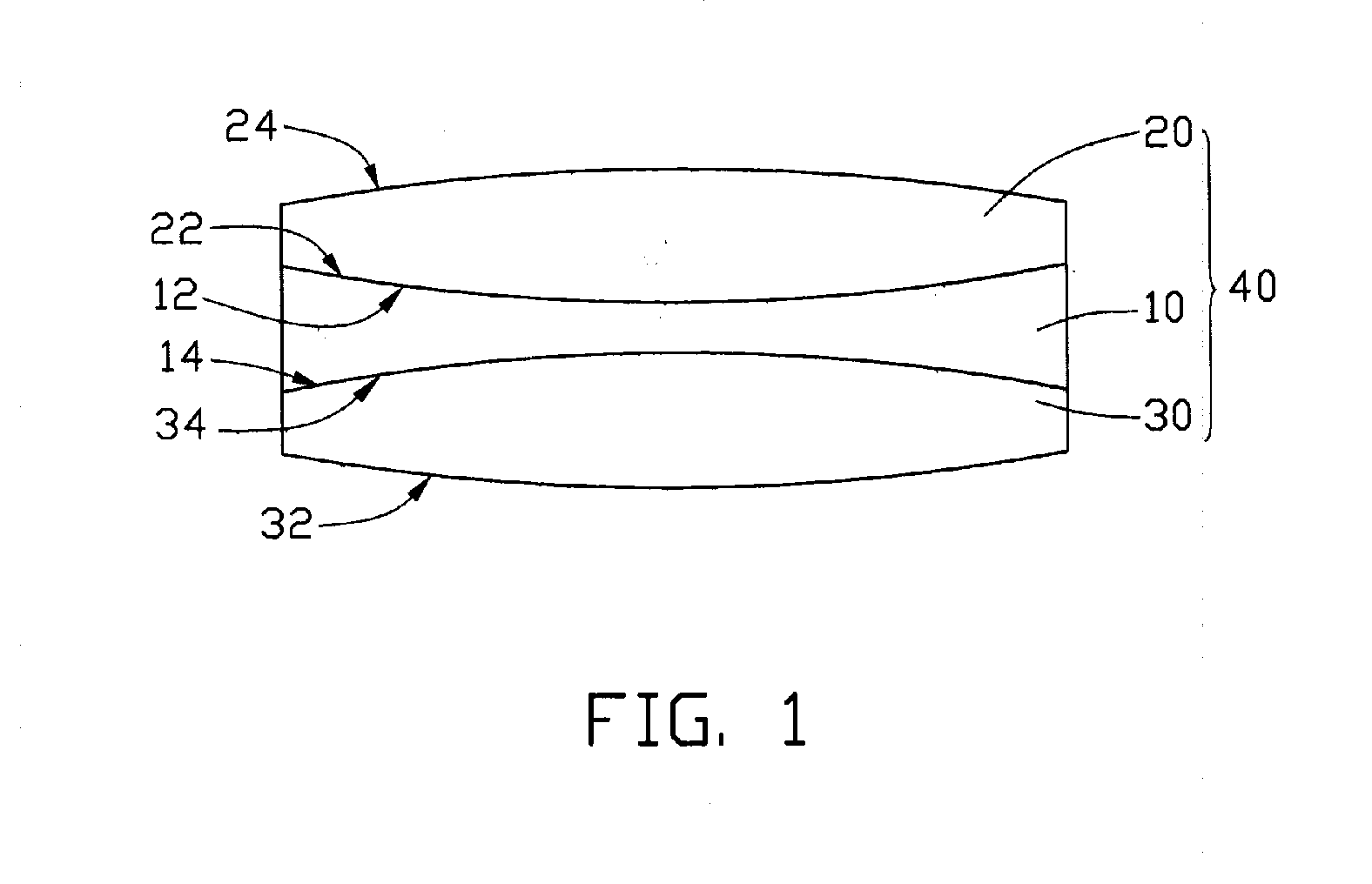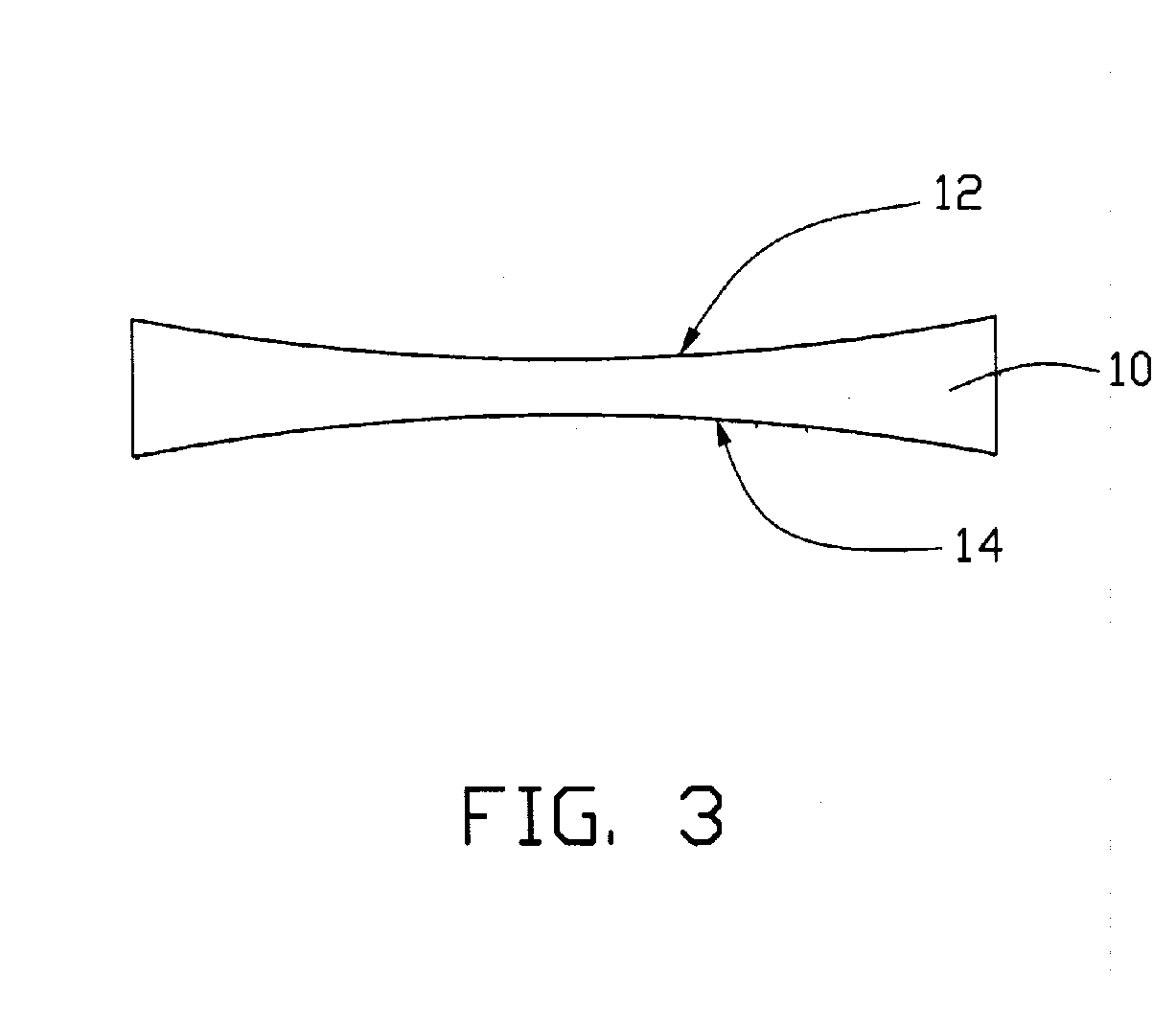Method for manufacturing composite lens
a composite lens and manufacturing method technology, applied in the field of composite lens manufacturing, can solve the problems of deterioration of optical properties of composite lens, difficulty in combining more multiple lens units together to form a composite lens, unduly bulky optical system, etc., and achieve the effect of improving optical properties and high productivity
- Summary
- Abstract
- Description
- Claims
- Application Information
AI Technical Summary
Benefits of technology
Problems solved by technology
Method used
Image
Examples
Embodiment Construction
[0019] Reference will now be made to the drawing figures to describe the present invention in detail.
[0020] Referring to FIG. 1, a composite lens 40 formed by a method for making a composite lens in accordance with a preferred embodiment of the present invention is shown. The composite lens 40 includes a base lens 10 and two plastic lens portions 20, 30. The base lens 10 has two opposite lens surfaces 12, 14. The plastic lens portions 20, 30 are formed on the opposite lens surfaces 12, 14 by means of a hot embossing process, respectively.
[0021] The base lens 10 is usually made of for example glass having a glass transition temperature in a range about from 500 to 700 degrees Celsius. The plastic lens portions 20, 30 are usually made of a plastic material, such as a thermoplastic material, an ultraviolet curable materials, etc. The thermoplastic material can be polycarbonate (PC), polystyrene (PS), polymethylmethacrylate (PMMA), etc. The ultraviolet curable material can be polydime...
PUM
| Property | Measurement | Unit |
|---|---|---|
| glass transition temperature | aaaaa | aaaaa |
| glass transition temperature | aaaaa | aaaaa |
| glass transition temperature | aaaaa | aaaaa |
Abstract
Description
Claims
Application Information
 Login to View More
Login to View More - R&D
- Intellectual Property
- Life Sciences
- Materials
- Tech Scout
- Unparalleled Data Quality
- Higher Quality Content
- 60% Fewer Hallucinations
Browse by: Latest US Patents, China's latest patents, Technical Efficacy Thesaurus, Application Domain, Technology Topic, Popular Technical Reports.
© 2025 PatSnap. All rights reserved.Legal|Privacy policy|Modern Slavery Act Transparency Statement|Sitemap|About US| Contact US: help@patsnap.com



